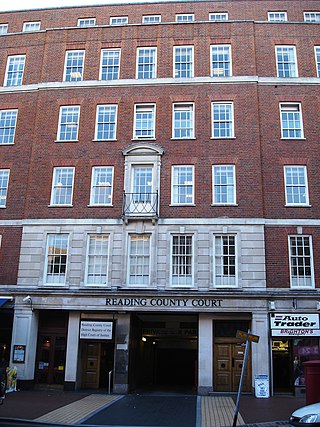
A landlord is the owner of a house, apartment, condominium, land, or real estate which is rented or leased to an individual or business, who is called a tenant. When a juristic person is in this position, the term landlord is used. Other terms include lessor, housing provider, and owner. The term landlady may be used for the female owners. The manager of a pub in the United Kingdom, strictly speaking a licensed victualler, is referred to as the landlord/landlady. In political economy it refers to the owner of natural resources alone from which an economic rent, a form of passive income, is the income received.

A lease is a contractual arrangement calling for the user to pay the owner for the use of an asset. Property, buildings and vehicles are common assets that are leased. Industrial or business equipment are also leased. Basically a lease agreement is a contract between two parties: the lessor and the lessee. The lessor is the legal owner of the asset, while the lessee obtains the right to use the asset in return for regular rental payments. The lessee also agrees to abide by various conditions regarding their use of the property or equipment. For example, a person leasing a car may agree to the condition that the car will only be used for personal use.
A leasehold estate is an ownership of a temporary right to hold land or property in which a lessee or a tenant has rights of real property by some form of title from a lessor or landlord. Although a tenant does hold rights to real property, a leasehold estate is typically considered personal property.
Rent control in Ontario refers to a system of rent regulation in Ontario, Canada which limits the amount by which the rent paid by tenants for rental accommodation can increase. It applies to any unit that was first occupied for residential purposes before November 15, 2018.

A house in multiple occupation (HMO), or a house of multiple occupancy, is a British English term which refers to residential properties where 'common areas' exist and are shared by more than one household.
The assured shorthold tenancy (AST) is the default legal category of residential tenancy in England and Wales. It is a form of assured tenancy with limited security of tenure, which was introduced by the Housing Act 1988 and saw an important default provision and a widening of its definition made by the Housing Act 1996. Since 28 February 1997 in respect of accommodation to new tenants who are new to their landlords, the assured shorthold tenancy has become the most common form of arrangement that involves a private residential landlord. The equivalent in Scotland is short assured tenancy.
Landlord harassment is the willing creation, by a landlord or their agents, of conditions that are uncomfortable for one or more tenants in order to induce willing abandonment of a rental contract. This is illegal in many jurisdictions, either under general harassment laws or specific protections, as well as under the terms of rental contracts or tenancy agreements.

The Landlord and Tenant Act 1954 is an act of the United Kingdom Parliament extending to England and Wales. Part II of the act is a statutory code governing business tenancies. Part I of the act, which dealt with the protection of residential tenancies, is now largely superseded.
Under the provisions of the United Kingdom Housing Act 2004 every landlord or letting agent that takes a deposit for an assured shorthold tenancy in England and Wales must protect the deposit under an authorised tenancy deposit scheme. The regulations came into effect on 6 April 2007, and were amended by the Localism Act 2011 and the Deregulation Act 2015. Most recently the Tenant Fees Act 2019 provided further protections for tenants.

A letting agent is a facilitator through which an agreement is made between a landlord and tenant to rent a residential property. This is commonly used in countries using British English, including countries of the Commonwealth. In the UK, Australia, and New Zealand, the agreement between landlord and tenant is normally formalised by the signing of a tenancy agreement. A letting agency normally charges a commission for their services, usually a percentage of the monthly rent.

An assured tenancy is a legal category of residential tenancy to an individual in English land law. Statute affords a tenant under an assured tenancy a degree of security of tenure. A tenant under an assured tenancy may not be evicted without a reasonable ground in the Housing Act 1988 and, where periodic changes in rent are potentially subject to a challenge before a rent assessment committee.

The Landlord and Tenant Act 1985 is a UK Act of Parliament on English land law. It sets minimum standards in tenants' rights against their landlords.

The Agricultural Holdings Act 1995 is an Act of the Parliament of the United Kingdom which applies to England and Wales. It is in force. The Act reformed and substantially deregulated the law relating to agricultural tenancies, and has had the dual effects of increasing the amount of land available to rent in the agricultural sector, and increasing the average rent per acre charged.
A Section 8 notice, also known as the Section 8 notice to quit or Form 3. It is a prerequisite if the landlord of an assured tenancy or assured shorthold tenancy wishes to obtain possession order from the court, thereby ending the tenancy, for a reason based on a circumstance entitling the landlord to possession under the grounds pleaded. It is used in England and Wales and is part of the Housing Act 1988. as amended by the Housing Act 1996.
The history of rent control in England and Wales is a part of English land law concerning the development of rent regulation in England and Wales. Controlling the prices that landlords could make their tenants pay formed the main element of rent regulation, and was in place from 1915 until its abolition by the Housing Act 1988.
A section 21 notice in England and Wales also known as a section 21 notice of possession or a section 21 eviction, is the notice under the Housing Act 1988 section 21, which a landlord must give to their tenant to begin the process to take possession of a property let on an assured shorthold tenancy without providing a reason for wishing to take possession. The expiry of a section 21 notice does not bring a tenancy to its end. The tenancy would only be ended by a landlord obtaining an order for possession from a court, and then having that order executed by a County Court bailiff or High Court enforcement officer. Such an order for possession may not be made to take effect earlier than six months from the beginning of the first tenancy unless the tenancy is a demoted assured shorthold tenancy. If the court is satisfied that a landlord is entitled to possession, it must make an order for possession, for a date no later than 14 days after the making of the order unless exceptional hardship would be caused to the tenant in which case possession may be postponed to a date no later than six weeks after the making of the order. The court has no power to grant any adjournment or stay of execution from enforcement unless the tenant has a disability discrimination, public law or human rights defence, or the case is pending an appeal.
Rent control in Scotland is based upon the statutory codes relating to private sector residential tenancies. Although not strictly within the private sector, tenancies granted by housing associations, etc., are dealt with as far as is appropriate in this context. Controlling prices, along with security of tenure and oversight by an independent regulator or the courts, is a part of rent regulation.
Rent regulation in Canada is a set of laws and policies which control the amount by which rental prices for real property can increase year to year. Each province and territory can pass legislation, where the purpose is to limit rent prices increasing beyond what is affordable for most home dwellers.
Rent regulation in England and Wales is the part of English land law that creates rights and obligations for tenants and landlords. The main areas of regulation concern,

The Housing Act 1988 is an Act of Parliament in the United Kingdom. It governs the law between landlords and tenants. The Act introduced the concepts of assured tenancy and assured shorthold tenancy. It also facilitated the transfer of council housing to not-for-profit housing associations, which was then carried out partly through the system of Large Scale Voluntary Transfer.






